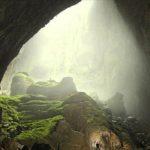An ecotourism boom has made Vietnam’s massive caves popular adventure destinations. But getting to them, and getting out, is not for the faint of heart.
The Vietnamese outpost of Phong Nha is unremarkable on a map. But the rural town of about 1,000 is perched on the edge of an astonishing destination—Phong Nha-Ke Bang National Park. The town’s proximity to the park has created an ecotourism boom in the region, mostly on the heels of Europeans, Australians, and Americans flocking to hike into the heart of its limestone caverns.
But travelers beware. At the height of the Vietnam War, Phong Nha was the most heavily bombed region in the country. More than 19 million bombs fell in the park’s borders.
Hiking without a guide in this park is expressly forbidden. And even with one, warnings abound: don’t touch anything metal, don’t stray off of the trail, and don’t get close to the snakes.






